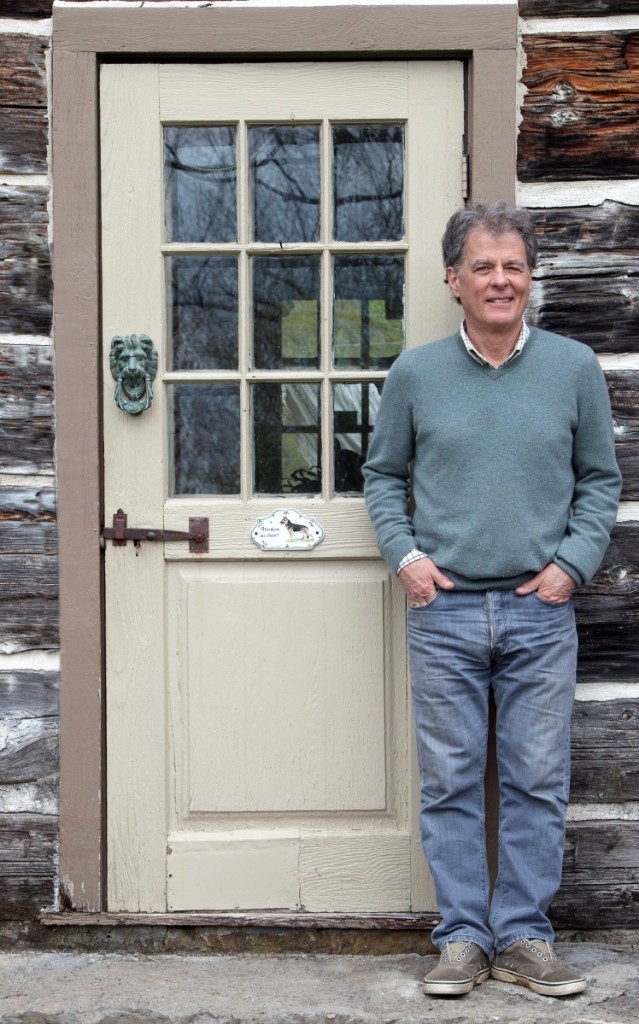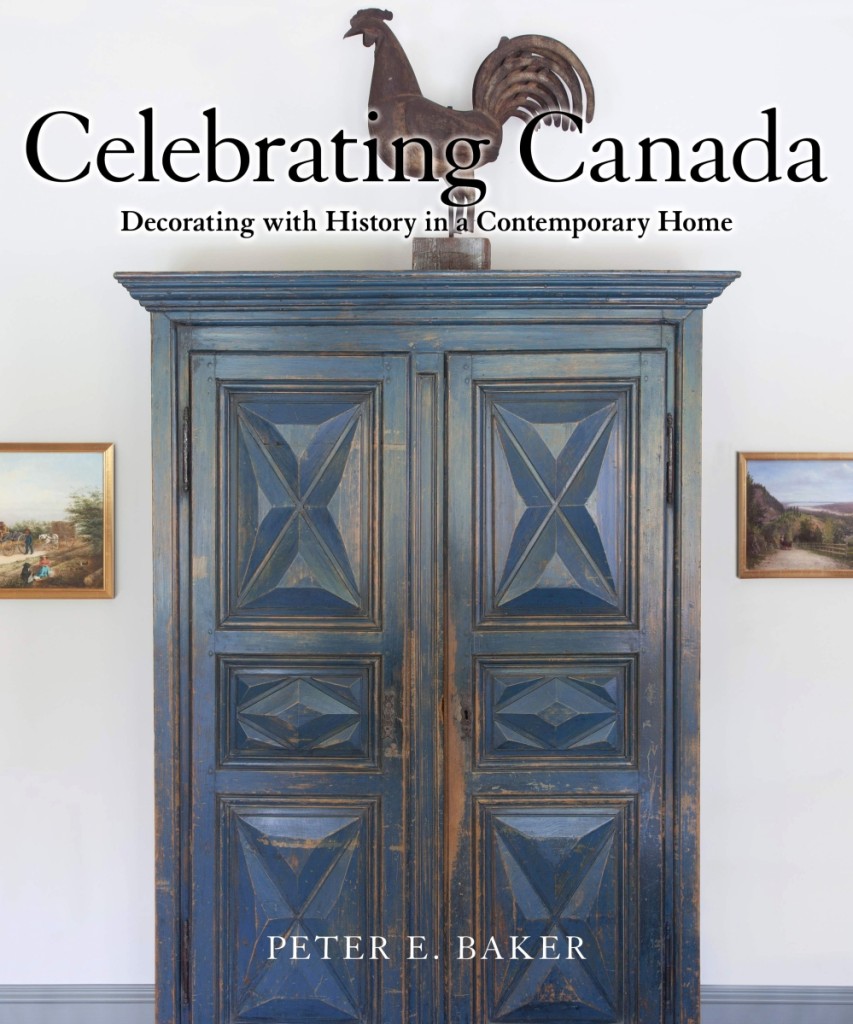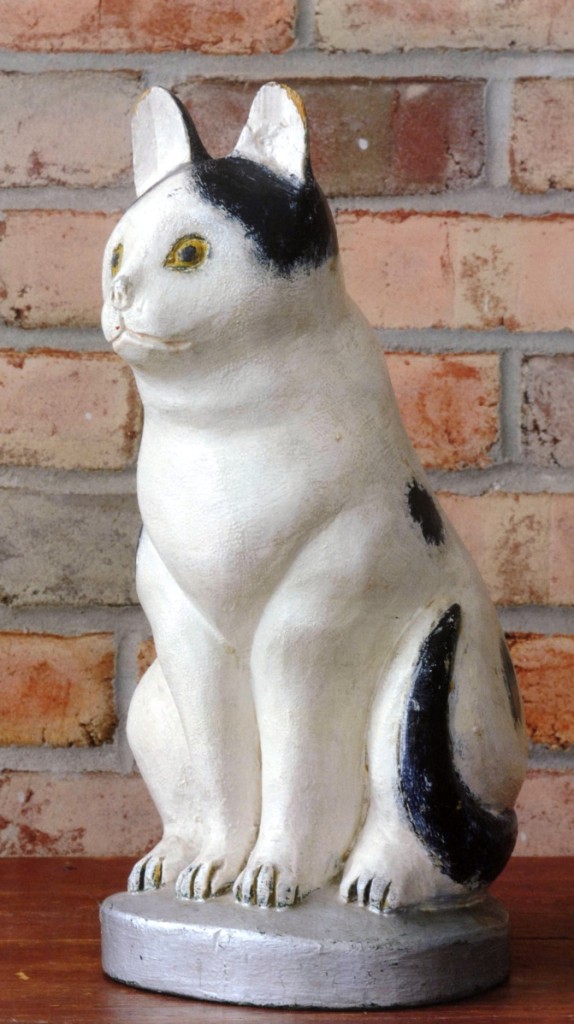 Quebec dealer Peter E. Baker, whose new book, Celebrating Canada: Decorating with History in a Contemporary Home, is reviewed in this issue, began his hunt for choice examples of country furniture and folk art – Canadian and American – in 1976, following in the footsteps of such pioneers as Nettie Covey Sharpe, a mid-Twentieth Century picker whose house and its contents are preserved by the Canadian Museum of History in Gatineau, QC, roughly midway between Quebec City and Toronto. Readers can catch Baker, a show dealer and guest appraiser in British and Canadian episodes of Antiques Roadshow, at Barn Star Productions’ Midweek in Manchester Antiques Show in New Hampshire on August 9-10, or visit him at fairs in Ontario and Quebec between now and October.
Quebec dealer Peter E. Baker, whose new book, Celebrating Canada: Decorating with History in a Contemporary Home, is reviewed in this issue, began his hunt for choice examples of country furniture and folk art – Canadian and American – in 1976, following in the footsteps of such pioneers as Nettie Covey Sharpe, a mid-Twentieth Century picker whose house and its contents are preserved by the Canadian Museum of History in Gatineau, QC, roughly midway between Quebec City and Toronto. Readers can catch Baker, a show dealer and guest appraiser in British and Canadian episodes of Antiques Roadshow, at Barn Star Productions’ Midweek in Manchester Antiques Show in New Hampshire on August 9-10, or visit him at fairs in Ontario and Quebec between now and October.
What is Canadiana?
Like Americana, Canadiana encompasses a vast range of domestically produced, handmade objects, including formal and country furniture, folk art, silver, paintings, sculpture and more.
Out of personal curiosity, are you a neighbor of mystery writer Louise Penny’s fictional Inspector Gamache, who lives in the Quebec village of Three Pines?
Wow, an Inspector Gamache fan. My shop in Knowlton, QC, is the area where Louise Penny lives. I live a couple of hours away in an even more remote corner of Quebec.
For what specialties are you best known?
Early furniture in original paint and Nineteenth and early Twentieth Century folk art.
Greatest myth or misnomer about antiques in Canada?
That they are second in quality to Americana.
Best thing you ever picked?
A disassembled Eighteenth Century diamond-point armoire stacked in the loft of a garage.
Most fun you ever had on Antiques Roadshow?
Watching my colleague’s reaction as a Nineteenth Century First Nations West Coast mask in old paint and untouched condition was pulled out of a garbage bag.
Will Canada 150, marking the sesquicentennial of Confederation, spark interest in Canadiana?
The Canadian antiques market really took off after Canada’s centennial in 1967. But times have changed 50 years later. I can only hope that strangers to our industry will see the cost advantages of today’s antiques and collectibles, and note how these items can add a unique touch to virtually any home.
What are you bringing to Midweek in Manchester?
I always try to find a few examples of Americana for Midweek in Manchester, but I typically bring a core piece of Canadiana just to show what I do and what I am looking for. Otherwise I make an effort to bring objects with a strong American flavor that would complement an Americana theme. I brought several very good American weathervanes a couple of years ago. In New Hampshire, I have the most success with objects whose strong visual appeal transcends geographic borders.
What is your favorite piece in the Burney collection, showcased in Celebrating Canada?
The circa 1690-1720 French Regime armchair. It has it all: age, form, rarity, original surface and condition. The fact that it was long lost makes it all the more satisfying to see it now in such an important collection. I also love the Damase Richard cat. It was carved in the Nineteenth Century for love, not commercial gain, by a true folk artist with no formal training. It is simplicity at its best.
Can we visit your shop?
We have a very small shop in Knowlton/Lac-Brome, Quebec, shared with colleague Brian Davies, who manages his shop and minds mine. Because I’ve always been a show dealer, the fresh finds tend to go to the shows.
Where can one buy a copy of Celebrating Canada?
In Canada, the stock answer is “at your favorite bookseller.” The book is in smaller bookstores and a few of the stores in the national Chapters/Indigo chain. It is available online at Amazon and Indigo.
-Laura Beach





